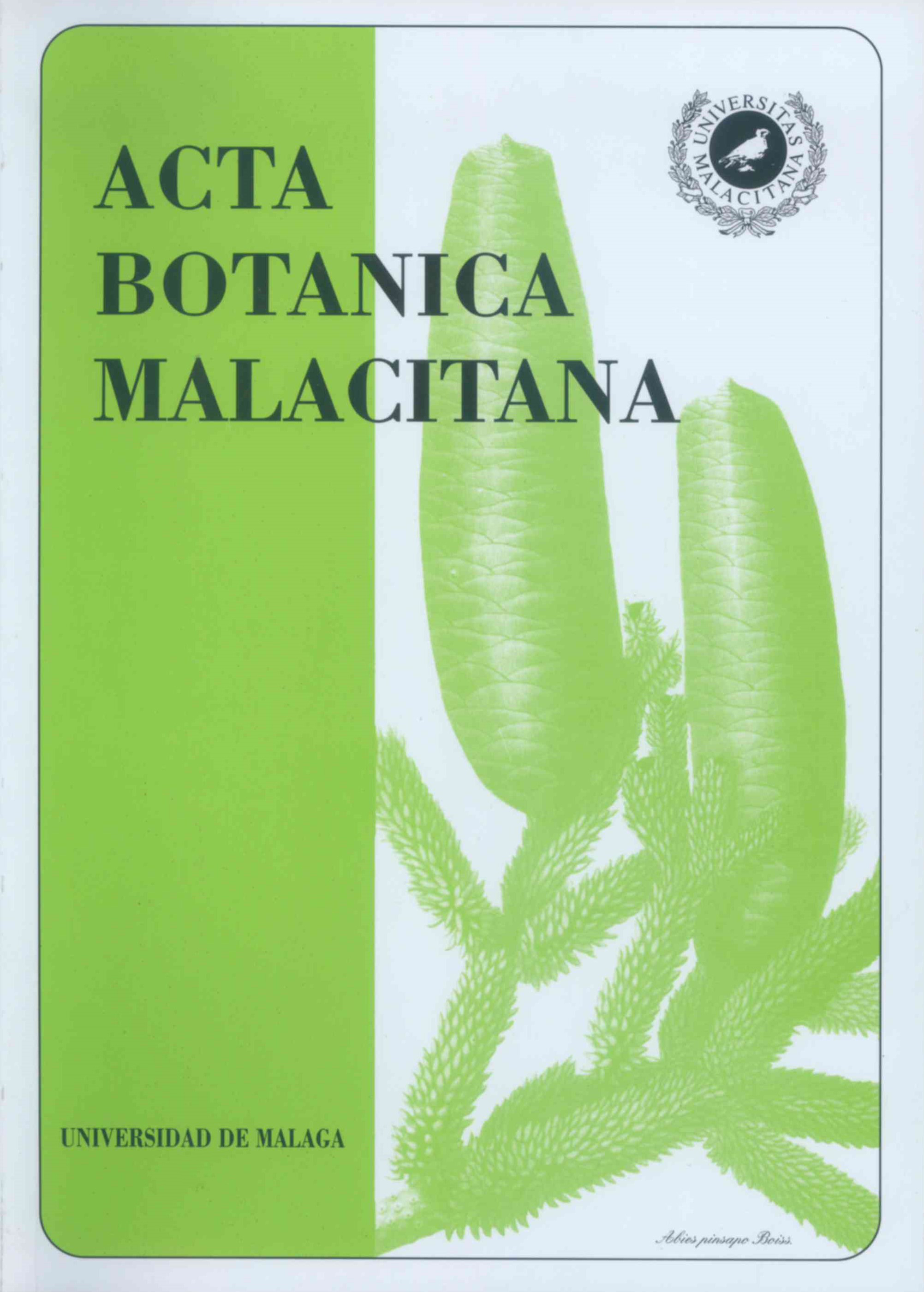Relaciones Suelo-Planta en Bosques de Abies pinsapo Boiss. Disponibilidad de Nutrientes y Estatus Nutricional
DOI:
https://doi.org/10.24310/abm.v28i0.7269Abstract
RESUMEN. Relaciones Suelo-Planta en Bosques de Abies pinsapo Boiss. Disponibilidad de Nutrientes y Estatus Nutricional. Se han evaluado las relaciones entre las propiedades del suelo y el estado nutricional de los árboles en pinsapares del Paraje Natural Los Reales de Sierra Bermeja y del Parque Natural Sierra de las Nieves (Málaga-España). Sc seleccionaron pinsapares que difieren en cuanto a su estado sucesional (masas agradativas versus maduras) y sustrato litológico (serpentinas versus calizas), en los que se evaluaron variables morfoedáficas de perfiles de suelo, y se analizaron las concentraciones de nutrientes en muestras de suelo, hojarasca y acículas. Los suelos de pinsapares calcáreos en fase agradativa (Yunquera) mostraron las menores concentraciones de macro y micronutrientes totales. Esto se correspondía con contenidos también mínimos de N y P en tejidos foliares, indicando la existencia de un estrés nutricional general, como es habitual en masas forestales en fase de exclusión de tallos (máxima competencia intraespecífica). No obstante, la presencia de relaciones NIP foliares normales implica que dicho estrés nutricional no ha desencadenado desbalances internos entre dichos nutrientes en los árboles. En pinsapares calcícolas maduros (Ronda), la mayor acumulación de materia orgánica en la hojarasca y el suelo superficial se relaciona con un aumento de la disponibilidad de nutrientes en el suelo, y una reducción en el estrés nutricional de los árboles. El pinsapar serpentinícola de Los Reales de Sierra Bermeja mostró niveles anormalmente elevados de N, y de las relaciones NIP, tanto en el suelo como en los tejidos foliares. Estos síntomas son característicos de ecosistemas forestales en una fase temprana del denominado síndrome de saturación de nitrógeno, asociado a disfunciones en el ciclo del N.
Palabras clave. Abies pinsapo, Sierra de las Nieves, Sierra Bermeja, macronutrientes, relaciones suelo- planta.
ABSTRACT. Soil-Plant relationships in Abies pinsapo Boiss-Fir Forests. Nutrient Availability and Nutritional Status. Relationships between soil profile properties and the tree nutritional status have been evaluated in Pinsapo-fir (Abies pinsapo, Boiss.) forests at Los Reales de Sierra Bermeja Natural Site and Sierra de las Nieves Natural Park (Málaga -Spain). Pinsapo stands widely differing in sucesional status (agradative versus old-growth stands) and lithology (serpentinic versus calcarcous substrate) were selected. Soil profile-development and nutrients in soil, littler and needles have been compared to the plant community development and parent material. Overall macro- and micronutrients availability was low in young calcareous pinsapo stands (agradative phase). Foliar tissues at these stands showed minima N and P concentrations, indicating a general nutritional stress; although nutritional unbalances were absence as indicated by normal NIP ratios in foliar tissues. As a consequence of the progressive build-up of the organic matter pool in the litter and surface soil layers along with succession, nutrient availability in calcareous pinsapo forests was the highest at the old-growth stands, and the tree nutritional stress appeared to be relieved. The serpentinic pinsapo forest at Los Reales de Sierra Bermeja showed very high levels of nitrogen and N/P ratios, both in the soil and foliar tissues. These preliminary results suggest this pinsapo forest is at an early phase of the N saturation syndrome.
Keywords. Abies pinsapo, Sierra de las Nieves, Sierra Bermeja, macronutrients, plant-soil relations.
Downloads
Metrics
Downloads
Published
How to Cite
Issue
Section
License
All information related to the licensing of published works in Acta Botanica Malacitana and copyright can be found in our Editorial Policy.







1.png)
